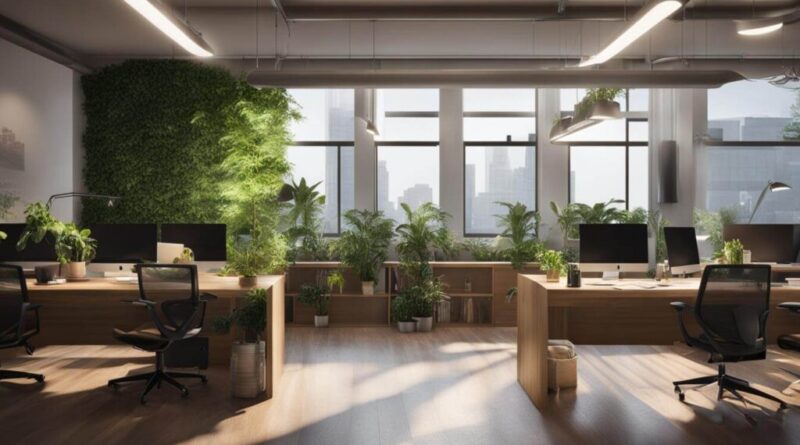Balancing Natural and Artificial Light: Creating a Harmonious Office Environment
Natural light boosts enjoyment, efficiency, and energy savings in businesses. Natural light in the workplace may regulate circadian cycles, improving sleep and wellness. Exposure to natural light reduces daytime reliance on artificial lights, saving energy. Place workstations and workplaces near windows or other natural light to maximize these advantages. However, using artificial lighting in addition to natural light ensures even illumination throughout the day and in areas where natural light is insufficient.
Positioning workstations correctly
Place workstations strategically to balance natural and artificial light in a workplace. Avoid contacting windows with desks. This reduces computer screen glare and direct sunlight. Moveable shades or drapes help manage light and make your workspace cooler in summer. To view details, utilize natural light and task lighting like desk lamps or under-cabinet lights. Workers are more comfortable and productive when they have ample light regardless of time or weather.
Selecting Man-Made Lighting
Making the workplace comfortable requires choosing the proper false lighting. LED lights endure long, consume minimal energy, and appear like daylight, making them recommended. Choose light sources with adjustable strength and color temperature to suit your requirements. Warm white makes environments where people work together or rest comfortable, while cool white is best for concentrated workstations. Balance ambient, work, and accent lighting to illuminate all areas and give you plenty of flexibility. Choosing the modern office lighting options is the best deal here.
Utilizing biophilic design
Office lighting with biophilic design may boost employee wellness and connection to nature. Biophilic lighting fixtures, particularly those made of natural materials, produce a relaxing ambiance. Use organic hanging lights like bamboo or wood fixtures, or place real plants near light sources. These elements soothe workers and inspire creativity while softening the false environment. Biophilic design for natural and artificial lighting improves workplace comfort.
Using lighting controls
High-tech light control systems integrate natural and artificial workplace lighting. These systems provide precise control of workstation lighting, color temperatures, and scheduling. Automated devices adjust lighting depending on occupancy and sunlight. Energy is saved and workers are more comfortable. Dimmers and programmable controls allow lighting to be adjusted to suit varied preferences. Business spaces may be more adaptable and responsive to natural and artificial light by integrating light control systems, promoting health and productivity.
Regular maintenance and adjustments
Office lighting must be changed and maintained often to work efficiently. Clean light fixtures and replace bulbs to maintain performance and quality. Review lighting plans often and make modifications depending on employee feedback and workplace requirements. Monitor natural light throughout the year and make adjustments to maximize solar gain. Businesses may preserve lighting that makes workers happier and more productive by investing money on repairs and modifications.
Creating a balanced working place with enough natural and artificial light requires preparation and execution. Offices may create a healthy, productive, and attractive environment by understanding natural light, strategically situating workstations, selecting the proper artificial lighting, employing biophilic design components, light control systems, and making frequent modifications. Maintaining these balances ensures that workers have the optimal illumination all day, improving their productivity and happiness.

